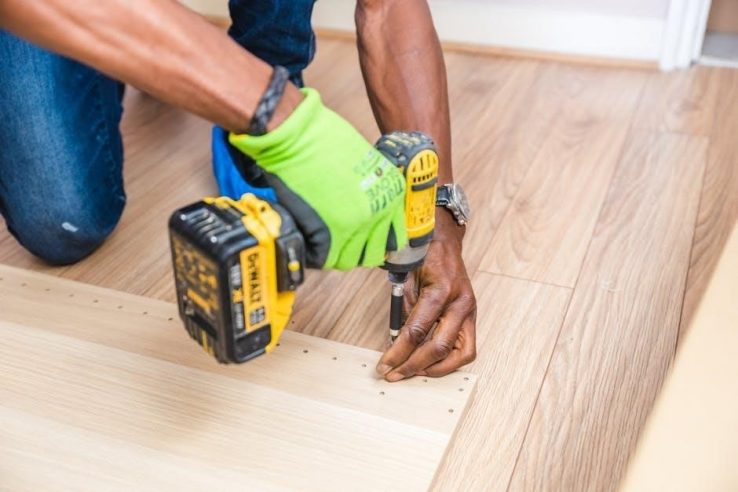The Honeywell TH6220D1028 is a FocusPro TH6220D Series programmable digital thermostat designed for energy efficiency and ease of use. It supports systems up to 2 heat/2 cool stages, offering precise temperature control and compatibility with various HVAC systems. This thermostat is known for its user-friendly interface and advanced features, making it a reliable choice for home comfort and energy savings.
1.1 Overview of the FocusPro TH6220D Series
The FocusPro TH6220D Series, including the TH6220D1028 model, is a line of programmable digital thermostats designed for energy efficiency and ease of use. These thermostats support up to 2 heat and 2 cool stages, making them compatible with a wide range of HVAC systems. Known for their user-friendly interface and advanced features, the FocusPro series offers precise temperature control, adaptive intelligent recovery, and customizable settings to optimize home comfort and energy savings.
1.2 Key Features and Benefits
The Honeywell TH6220D1028 offers programmable settings for up to four periods per day, allowing precise temperature control and energy savings. It features adaptive intelligent recovery, ensuring the set temperature is reached on time. The thermostat supports systems with up to 2 heat and 2 cool stages, making it versatile for various HVAC setups. Its user-friendly interface and compatibility with different systems provide ease of use and installation. These features help optimize home comfort while reducing energy costs through efficient temperature management.
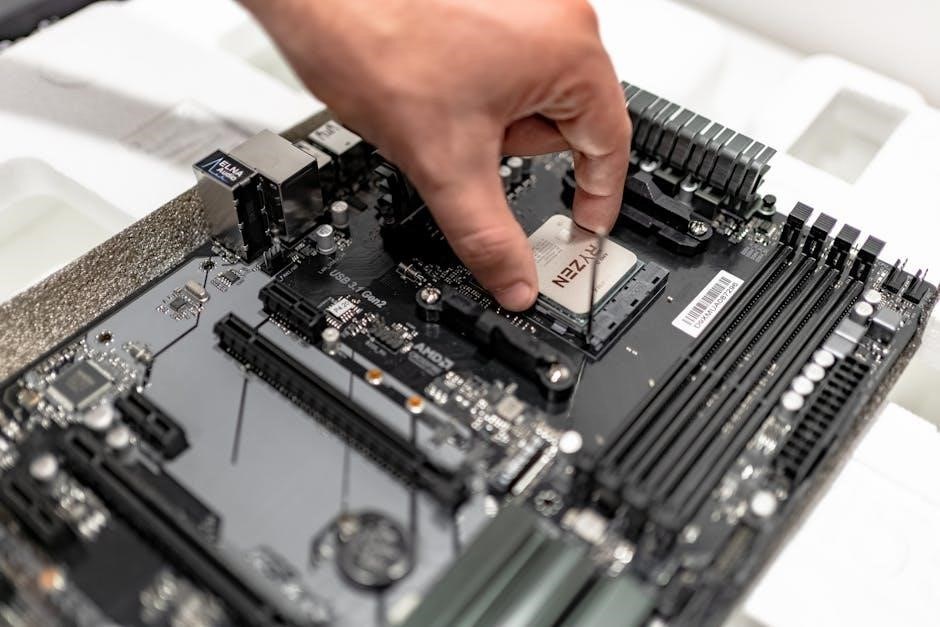
Pre-Installation Checklist
Disconnect power before starting. Verify system compatibility and ensure the thermostat is installed at the correct height. Gather all necessary tools and materials for installation.
2.1 System Compatibility Check
Verify that the Honeywell TH6220D1028 is compatible with your HVAC system. Check the system type (1Heat/1Cool or 2Heat/1Cool) and ensure the thermostat supports your specific heating and cooling configuration. Confirm the voltage requirements match your system’s power setup. Also, verify that the thermostat is compatible with any additional components, such as humidifiers or dehumidifiers, if connected. This step ensures proper functionality and avoids installation issues. Always refer to the manufacturer’s specifications for detailed compatibility information.
2.2 Tools and Materials Required
To install the Honeywell TH6220D1028 thermostat, gather the necessary tools and materials. You will need a screwdriver (both Phillips and flathead), a drill with bits, wire strippers, pliers, and a level. Materials include screws, wall anchors, and wire connectors. Ensure you have access to a voltage tester to safely verify power. Check the existing wiring and thermostat mounting setup to confirm compatibility. Having all tools and materials ready ensures a smooth and efficient installation process without delays.
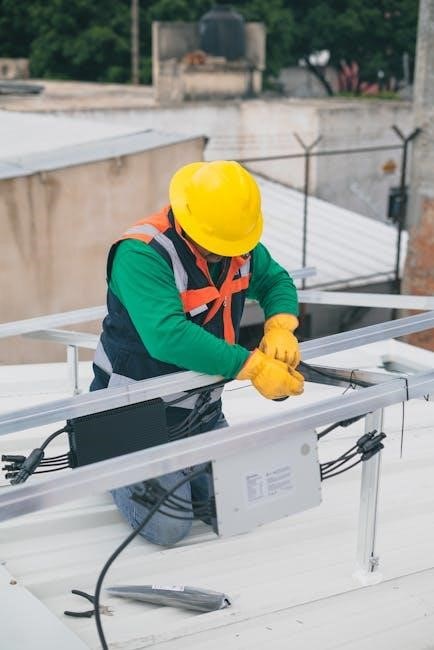
Installation Process
The installation involves preparing the site, disconnecting power, installing the wallplate, and mounting the thermostat. Follow the step-by-step guide for a safe and proper setup.
3.1 Wallplate Installation
Begin by ensuring the area is clear of debris and the power is off. Mount the wallplate to the wall using the provided screws or anchors. Use a level to ensure proper alignment. Drill pilot holes if necessary to avoid damaging the wall. Secure the wallplate firmly, making sure it is straight and evenly aligned. Once installed, verify that the wallplate is stable and ready for the thermostat mounting. This step ensures a solid foundation for the thermostat’s operation.
3.2 Mounting the Thermostat
Mount the thermostat to the wallplate by aligning the mounting tabs with the wallplate’s slots. Gently push the thermostat onto the wallplate until it clicks securely into place. Ensure the device is level and properly seated. Tighten the screws provided to secure the thermostat firmly to the wallplate. Double-check that all connections are made and the thermostat is flush against the wall for proper functionality and appearance. This step ensures the thermostat is safely and correctly installed.
3.3 Disconnecting Power Before Starting
Before starting the installation, switch off the power to the HVAC system at the circuit breaker or fuse box. Verify the power is off using a voltage tester to ensure safety. Do not rely on the thermostat’s switch to disconnect power, as this does not necessarily shut off the main power supply. This step is crucial to prevent electrical shocks or injuries during the installation process.
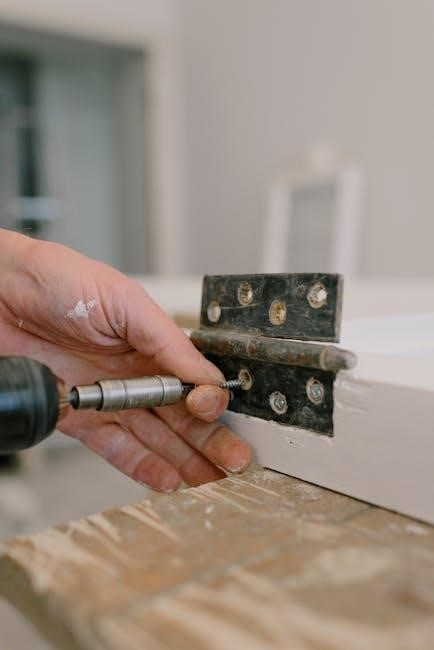
Wiring and Connections
Proper wiring is essential for safe and efficient thermostat operation. Always refer to the wiring diagram for accurate connections, ensuring compatibility with your HVAC system.
4.1 Understanding the Wiring Diagram
The wiring diagram is a visual guide showing connections between the thermostat and HVAC system. It uses symbols and labels for terminals like R, W, Y, G, and C. Matching wires correctly ensures proper functionality and safety. Found in the manual or online, it’s crucial to use the correct diagram for your model. Double-check connections before powering up to prevent issues. Understanding symbols helps configure the thermostat accurately for specific HVAC setups, making installation straightforward even for first-time users.
4.2 Connecting the Wires to the Thermostat
Match each wire to its corresponding terminal on the thermostat, referring to the wiring diagram. Common terminals include R (power), W (heat), Y (cool), G (fan), C (common), and O/B (changeover valve). Gently insert wires into terminals, ensuring they are secure and not forced. Double-check connections against the diagram to avoid errors. Once connected, verify all wires are properly seated to ensure reliable operation. Correct connections are essential for proper thermostat function and system performance.
4.3 Verifying Wire Connections
After connecting the wires, turn the power back on and test the thermostat’s basic functions. Ensure the display lights up and responds to button presses. Verify each wire connection by checking for proper seating and alignment with the terminals. Refer to the wiring diagram to confirm all connections are correct. Perform a test run of heating and cooling cycles to ensure the system operates smoothly. Address any issues immediately to prevent malfunctions or safety hazards.
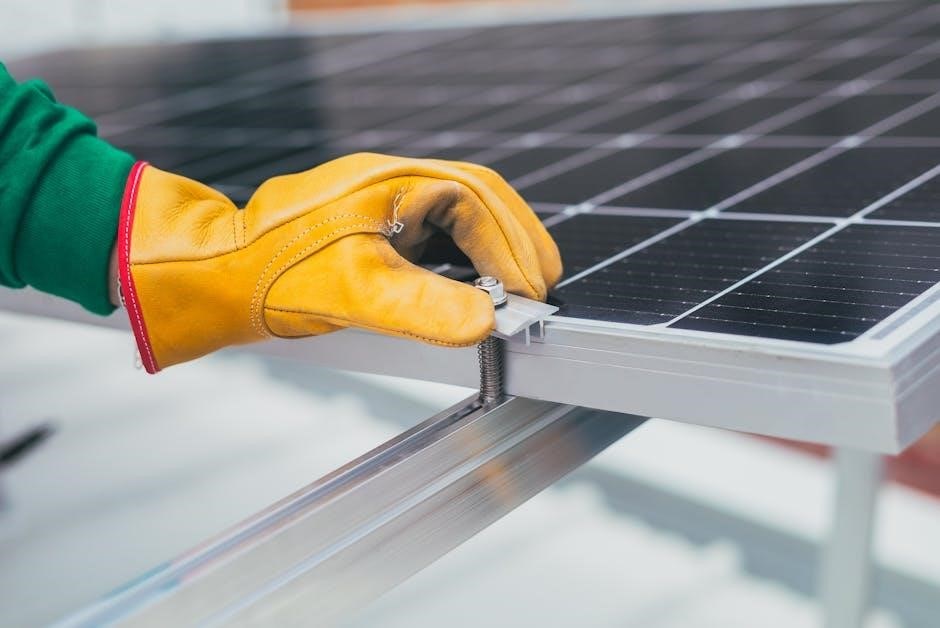
Power Options and Mounting
The thermostat requires a 24V AC power supply, typically from an HVAC system. Mount it at eye level, 52 inches from the floor, in a central location for accurate temperature sensing and easy access.
5.1 Power Requirements and Setup
The Honeywell TH6220D1028 requires a 24V AC power supply, typically sourced from the HVAC system. Ensure the power is turned off at the circuit breaker before installation. Use the C (common) terminal if a common wire is not present. Connect the wires to the appropriate terminals, matching the system voltage. After wiring, turn the power back on and test the thermostat’s operation. Always follow safety guidelines to avoid electrical hazards during setup.
5.2 Mounting the Thermostat at the Correct Height
The Honeywell TH6220D1028 should be mounted at a height of 52 to 60 inches from the floor for optimal performance. This ensures the thermostat is easily accessible and provides accurate temperature readings. Choose a location away from direct sunlight, drafts, and extreme temperatures to avoid skewed readings. Use a spirit level to ensure the thermostat is perfectly level during installation. Proper leveling is crucial for accurate temperature sensing and overall system efficiency.

Installer Setup and Configuration
This section guides installers through initial setup, including menu navigation and configuration options to ensure proper system operation and performance, optimizing settings for efficiency.
6.1 Navigating the Installer Setup Menu
The Installer Setup Menu provides essential configuration options for system customization. Access the menu by pressing and holding the “Menu” button until “Installer Setup” appears. Use the arrow keys to scroll through options like system type, changeover valve settings, and advanced features. Each selection is labeled clearly for ease of navigation. Ensure all settings match the HVAC system specifications to optimize performance and efficiency. Proper navigation ensures accurate system operation and prevents potential issues during heating or cooling cycles.
6.2 Setting the System Type (1Heat/1Cool, 2Heat/1Cool)
After accessing the Installer Setup Menu, select the system type that matches your HVAC configuration. Choose between 1Heat/1Cool for single-stage heating and cooling systems or 2Heat/1Cool for dual-stage heating systems. Use the arrow keys to navigate and press “Select” to confirm. Ensure the selection aligns with your system specifications to optimize performance. Proper system type configuration is critical for accurate operation and energy efficiency, preventing potential issues during heating or cooling modes.
6.3 Configuring the Changeover Valve Setting
Navigate to the Installer Setup Menu and scroll to the Changeover Valve setting. Select the appropriate option based on your system: Auto (for most systems), Gas (for heat pumps with gas backup), or Electric (for heat pumps without backup). Use the arrow keys to choose and press “Select” to confirm. This setting ensures proper transition between heating and cooling modes. Incorrect configuration may lead to inefficient operation or system malfunctions, so verify compatibility with your HVAC setup before finalizing. Proper adjustment is essential for optimal performance and reliability.
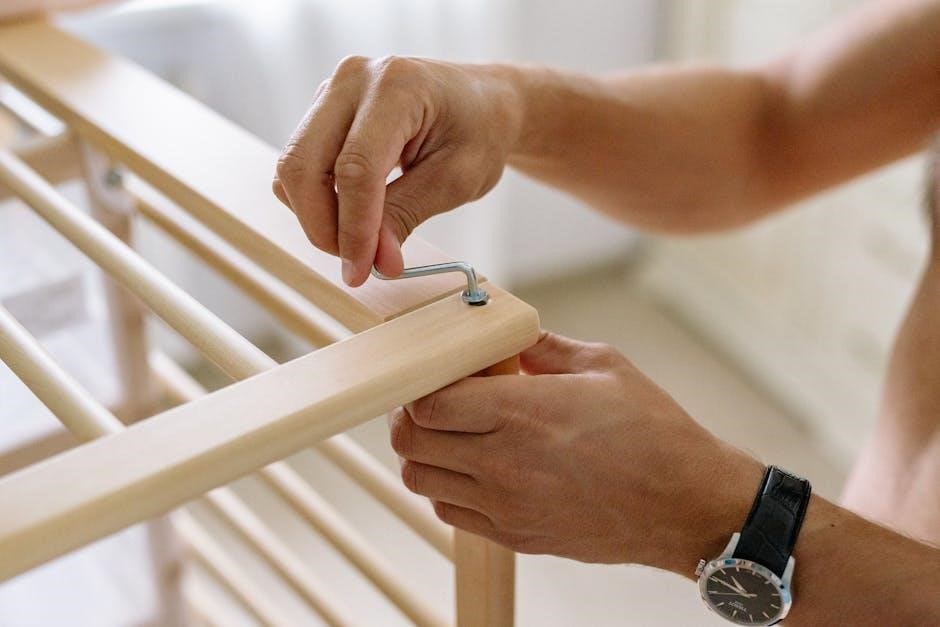
Advanced Features Setup
Configure advanced settings like scheduling, remote access, and smart recovery. These features enhance efficiency and convenience, ensuring optimal system performance and energy savings year-round.
7.1 Enabling Auto Changeover
To enable Auto Changeover on your Honeywell TH6220D1028 thermostat, navigate to the Settings menu and select “System” or “Operating Mode.” Choose the “Auto Changeover” option and set the desired temperature range for automatic switching between heating and cooling modes. Ensure the changeover valve is correctly configured for your system type. Test the feature by setting temperatures outside the current range to confirm the system switches modes automatically. Adjust settings as needed for optimal performance and energy efficiency.
7.2 Configuring Adaptive Intelligent Recovery
To configure Adaptive Intelligent Recovery, access the Installer Setup menu and select the “Recovery” option. Enable the feature and set the desired recovery time based on your system’s needs. The thermostat will learn your system’s operation over time, adjusting pre-cooling or pre-heating cycles to ensure the set temperature is reached by the scheduled time. This feature optimizes energy efficiency and comfort by minimizing unnecessary system operation while maintaining precise temperature control.
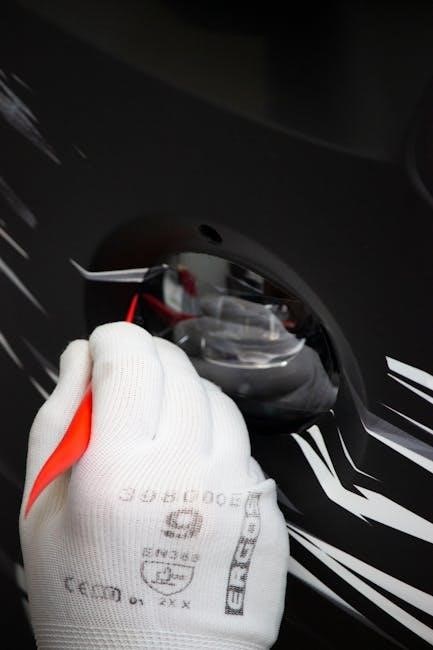
Safety Considerations
Handle the thermostat carefully to avoid damage. Mercury-containing components require proper disposal. Always disconnect power before installation to prevent electrical hazards; Ensure the device is not exposed to extreme temperatures or moisture to maintain safe and reliable operation.
8.1 Mercury Notice and Handling
The Honeywell TH6220D1028 thermostat contains mercury, a toxic substance. Handle the device carefully to avoid breaking the mercury switch. Dispose of the thermostat at an authorized hazardous waste recycling center. Do not discard in regular trash. If the thermostat is damaged, avoid touching any mercury spills and keep the area well-ventilated. Contact a professional for cleanup. If damaged, do not attempt repairs yourself. Refer to local regulations for proper disposal guidelines to ensure environmental safety and compliance.
8.2 Ensuring Safe Installation Practices
Always turn off power to the HVAC system at the circuit breaker before starting installation. Verify system compatibility and follow manufacturer instructions closely. Use appropriate tools to avoid damaging wires or components. Secure all connections tightly to prevent loose wires. Test the thermostat’s basic functions after installation to ensure proper operation. Keep the area clean and well-lit to minimize accidents. Follow local electrical codes and safety guidelines to guarantee a safe and reliable setup. Ensure all wires are properly insulated and safely routed.
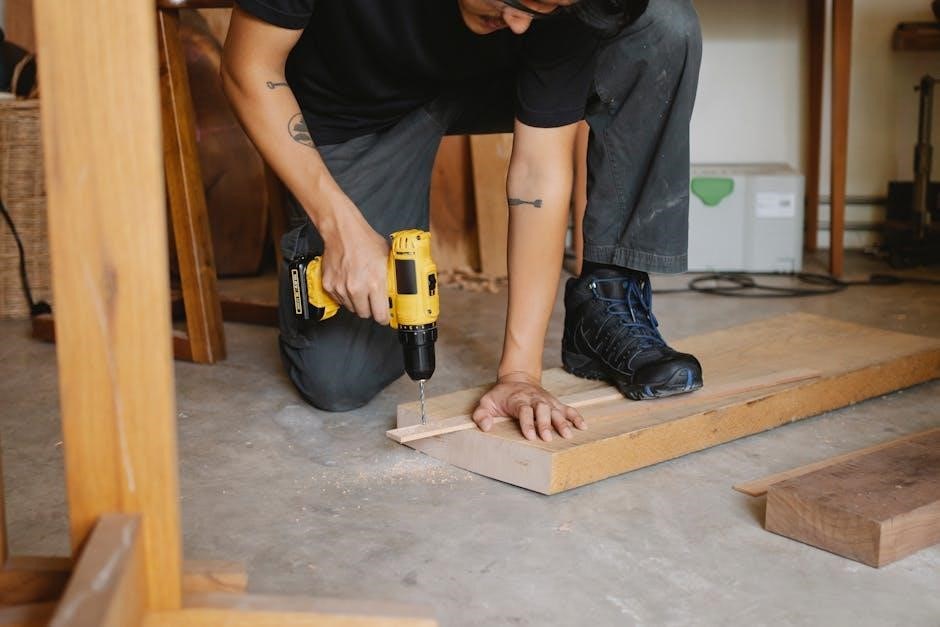
Post-Installation Testing
After installation, test the thermostat’s basic functions, such as temperature adjustment and system switching, to ensure proper operation. Verify the display, heating/cooling cycles, and all programmed settings are functioning correctly.
9.1 Testing the Thermostat’s Basic Functions
Power on the system and ensure the thermostat display lights up. Test temperature adjustment by raising and lowering the setpoint to confirm heating or cooling activation. Verify system mode switching (Heat/Cool/Off) works correctly. Check the display for accurate temperature readings and ensure all buttons and controls respond properly. Test schedule settings if programmed, and confirm the system cycles on and off as expected. Look for any error messages and address them promptly to ensure smooth operation.
9.2 Verifying Heating and Cooling Operations
Switch the thermostat to Heat mode and set the temperature 5°F above the current room temperature. Verify the heating system activates and runs smoothly. Repeat the process for Cool mode, setting the temperature 5°F below the current room temperature to ensure the cooling system operates correctly. Check for proper airflow and temperature changes in the room. Confirm both heating and cooling cycles turn on and off as commanded by the thermostat, ensuring reliable system operation.
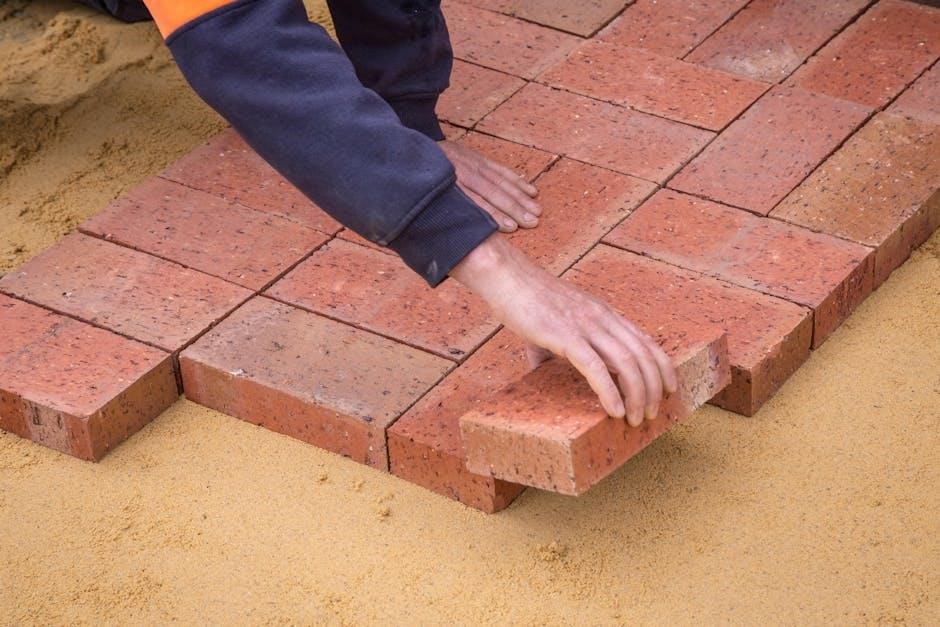
Troubleshooting Common Issues
Identify symptoms like unresponsive displays or uneven heating/cooling. Check power connections, wiring, and system compatibility. Reset the thermostat if necessary to resolve operational issues effectively.
10.1 Diagnosing Power-Related Problems
Check if the thermostat has power by ensuring the circuit breaker isn’t tripped. Verify correct battery installation or wiring connections. Test voltage at the thermostat using a multimeter. If no display, ensure power is supplied to the HVAC system. Check for blown fuses or loose wires. Restart the system after addressing any issues. Refer to the manual for specific voltage requirements. If problems persist, contact a licensed electrician or HVAC professional for assistance.
10.2 Resolving Wiring Connection Issues
If the thermostat isn’t functioning, check all wire connections for looseness or damage. Ensure wires are correctly matched to their terminals as per the wiring diagram. Verify that the system type (1Heat/1Cool or 2Heat/1Cool) is properly configured. Use a multimeter to test for continuity or short circuits. If issues persist, consult the wiring diagram or contact a licensed HVAC technician for professional assistance. Always disconnect power before inspecting or repairing wiring connections.
Proper installation ensures reliable temperature control, enhances comfort, and optimizes energy efficiency, making the Honeywell TH6220D1028 a superior choice for any home.
11.1 Final Check and System Optimization
After installation, perform a final check to ensure all connections are secure and the thermostat functions correctly. Verify heating, cooling, and fan operations. Optimize system settings, such as temperature ranges and scheduling, for energy efficiency and comfort. Check the battery level if applicable and ensure the display is clear. Test adaptive recovery and auto changeover features. Confirm proper mounting and alignment. Review all configurations to ensure they align with your HVAC system and preferences for optimal performance.
